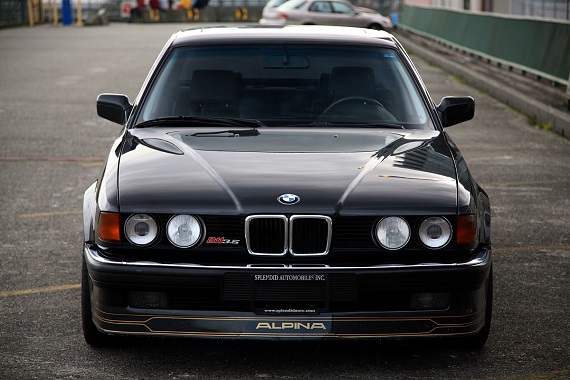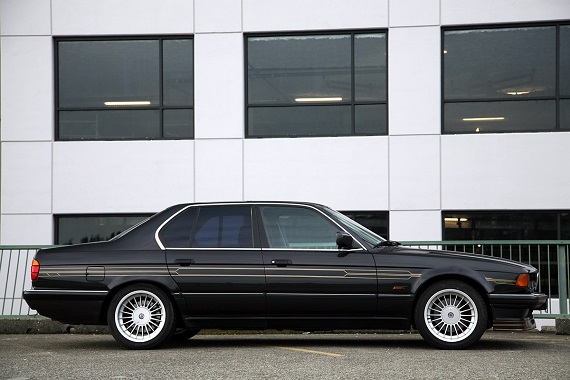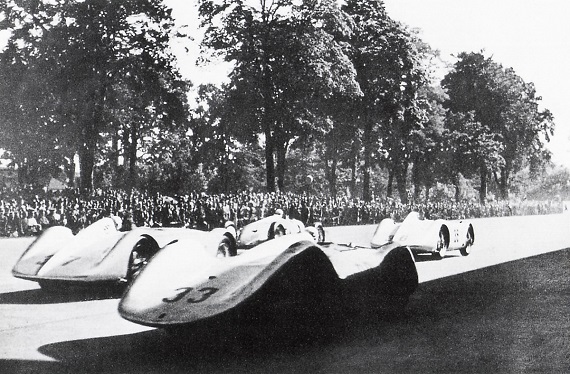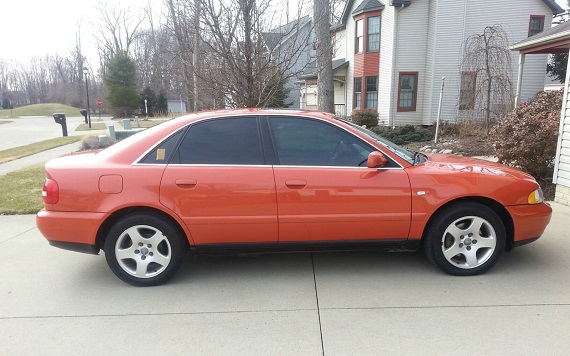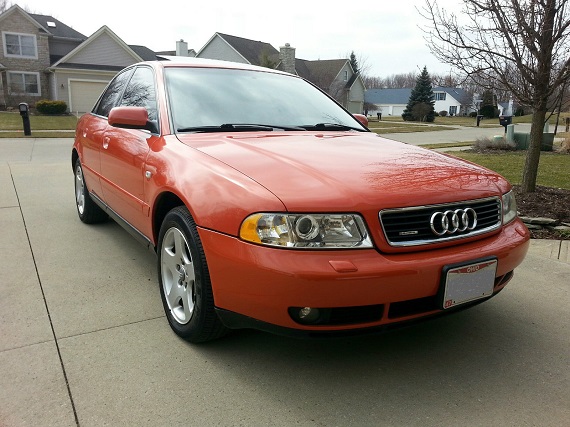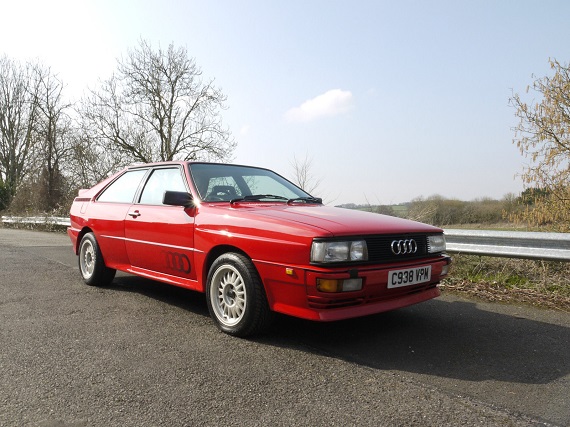While many celebrate the E38 as the highpoint of 7-series design, I prefer the look of the E32. Perhaps that, in part, is because I was lucky enough to live with one for some time – one of the rare ’88 5-speeds, it was a car that I always enjoyed driving and especially enjoyed looking at. Granted, you could rightly claim that the E32 was stylistically not much more than a stretched E34. Is that such a bad thing, though? To me, the design language transferred really well and the E32 was well proportioned, modern looking and yet immediately identifiable as a large BMW,and yet muscular flares and a slight tick up in the body line towards the trunk was a built-in spoiler. The E38 took this design and refined it even more, with sleeker lines and a more dramatic drop in front – probably one of the main reasons, along with some killer wheels, that people prefer the later design. But outfit an E32 with lower suspension, a deeper air dam and some killer wheels, and the design is pretty awesome. The stripes don’t hurt, either – nor does the top-tier name Alpina painted all over:
Author: Carter
One of the great things about this blog is that we keep a pretty good inventory of rare cars written up, so that when one looks familiar we can go back and check it out. This doesn’t always work, as occasionally we forget that we’ve written one up, such as the S6 Avant I managed to write up twice. However, both of today’s tuner cars appeared on these pages before in one form or another, and I managed to track both down. Later we’ll look at an Alpina B11 3.5 that was seen here five years ago, but with 332 made it was still a bit surprising that the same one popped up for sale. When it came to today’s Ruf BTR Slantnose – one of only five made – I was sure we’d seen it before, and I was somewhat right…
CLICK FOR DETAILS: 1986 Ruf BTR Slantnose on eBay
1 Comment
A 1935 Auto Union Type B Streamliner used for both records and the annual Avus race in Berlin
This past weekend weekend we saw a bit of hubris and bad strategy lead to Mercedes-Benz losing to Ferrari in the Malaysian Grand Prix. Despite the massive investment and seemingly pedantic attention to detail, the same problems existed in the 1930s for the company. Increasingly Mercedes-Benz needed to differentiate itself from Auto Union by undertaking extreme efforts. These efforts were not always profitable; indeed, one could argue that – as we saw last week – since they were already having difficulty delivering cars thanks to raw material shortages, undertaking new forms of racing and record-breaking might have seemed ill-conceived for the company. However, still at stake was preferential treatment from the government, especially when it came to lucrative military contracts. As such, Mercedes-Benz undertook some unlikely projects to not only gain international prestige for the Daimler-Benz model range, but indeed to curry favor with the government.
FOUR : PUSHING THE LIMITS – THE GOVERNMENT GOES RACING
In the world of post A4 Audis, you’d be forgiven for thinking you went back to the old Westerns with tumbleweeds rolling across the screen when it comes to color selection. There are several different shades of grey or silver, a few whites, some blacks, and then occasionally a blue will pop up. Some really daring folks chose bright red or dark green, but unless you get into a “S” model, you’re not likely to see an unusual color. That’s unfortunate, because Audi actually offered you many very cool options in the B5 A4 throughout its run. However, if you lament the cool colors went away, it should be no surprise; very, very few people bought them. And given the A4s propensity for being discarded, they’re in most cases even more sparse than when new. Yet these special color cars tended to be bought by people who took good care of them, and usually come to market in fairly pristine shape – so I bet you can guess why this A4 is here today. A non sport package V6 tiptronic wouldn’t usually make the list, but a lower mile India Red Pearl Effect with Ecru/Onyx interior in very good overall condition? You bet:
CLICK FOR DETAILS: 2001 Audi A4 2.8 quattro on eBay
3 CommentsOne of our readers not so subtly pointed out to me that I mention a certain box-flared car from a certain manufacturer perhaps a bit too often when reviewing Audis, and perhaps he’s right. Isn’t the Quattro enough of a legend to stand on it’s own? The answer is that until quite recently, no – it wasn’t. In part that’s due to the experience of the diluted American market version and Audi’s near denial that it built any cars before the A4. 160 horsepower with the best part of 3,000 pounds to haul around isn’t even enough for most Subarus these days, so it should be no surprise that the Quattro’s performance suffered in U.S. spec. What also suffered was buyer’s pockets; at $40,000 in the early 1980s, this car was the equivalent of nearly $100,000 today. Though the driving dynamics were more than the sum of their parts, ultimately Quattro was dropped after a short run in the U.S. market with 664 sold. Despite the relative sales flop in the U.S., the Quattro had a greater impact in Europe, where its fresher and lighter face was paired with 40 more horsepower and steadily improving performance and technology coupled with its major rally successes. Indeed, the last of the RR Quattros continued on alongside the replacement S2 until the end of 1991. It was so stellar, there was a whole segment of forced induction, flared WRC candidates that copied its blueprint. Remember the Celica All-Trac Turbo? Sierra Cosworth? How about the 323GTX? Golf Rallye? Lancia Delta Integrale? Subaru Impreza 22B? All of them are legendary cars born from the Quattro. As there is more appreciation for Audi’s 80s halo car in Europe, we’ve seen a steady stream of nice examples head back to the homeland from U.S. shores. Perhaps it’s time to turn the tide?
